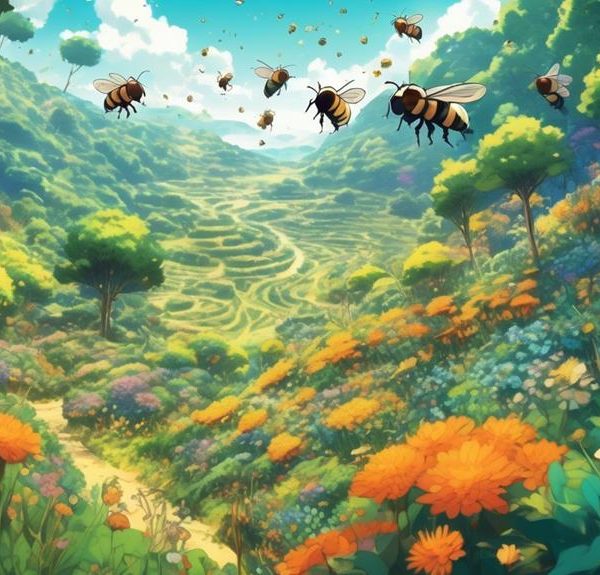Gain insights into the ideal height for hanging mason bee houses and discover how this delicate balance can make all the difference.

How High to Hang Mason Bee House?
When it comes to giving your buzzing friends a home, the question of altitude isn't as straightforward as you might think. As an aspiring mason bee host, you're likely considering where to place your bee house for maximum benefit.
While you might be tempted to hang it at a convenient height for you, that might not be the most appealing height for your tiny tenants. So, how high should a mason bee house be hung to attract these beneficial pollinators?
Well, let's just say it's a delicate balance that requires careful consideration. Stay tuned as we explore the intricacies of proper bee house placement; you'll be surprised at what you may discover.
Key Takeaways
- Mason bees are solitary creatures that construct nests in hollow plant stems or pre-existing holes in wood.
- The height of the bee house affects the bees' survival and breeding, with a recommended height of 4 to 7 feet above the ground.
- An optimum height of approximately 5 to 6 feet off the ground is ideal for mason bee houses.
- Bee houses should be placed facing an easterly direction to provide morning sun and balanced sunlight throughout the day.
Understanding Mason Bee Habits
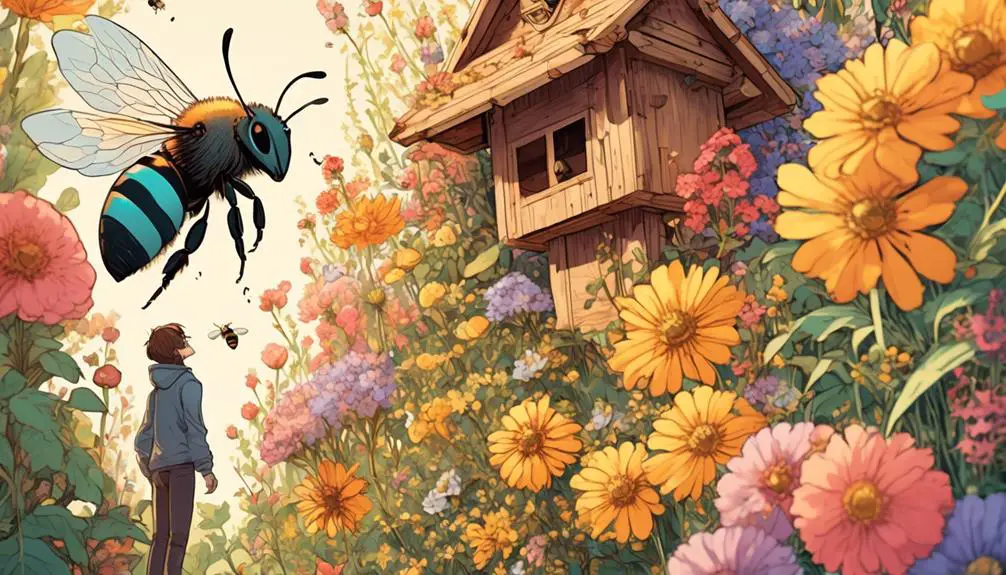
Before you hang your mason bee house, it's crucial to understand these industrious insects' habits and life cycle to ensure their survival and productivity. Mason bees are solitary creatures, meaning they don't live in colonies like honeybees. Instead, each female is a queen and a worker, laying eggs and gathering food for her offspring.
Mason bees have a fascinating life cycle. In spring, adult bees emerge from their overwintering cocoons, with males appearing first. After mating, female bees begin constructing nests. They favor hollow plant stems or pre-existing holes in wood, hence the idea of a mason bee house.
In each cell, the female lays an egg on a provision of pollen and nectar, then seals it with a plug of mud. This process repeats until she fills the entire tunnel. After the last egg is laid, the mother bee dies. Meanwhile, the eggs develop into larvae, then pupae, and finally overwinter as adults, ready to start the new cycle in spring.
Understanding these habits is key to providing a suitable environment for them. Make sure your mason bee house mimics their preferred nesting sites and provides nearby sources of pollen, nectar, and mud.
Importance of Bee House Height
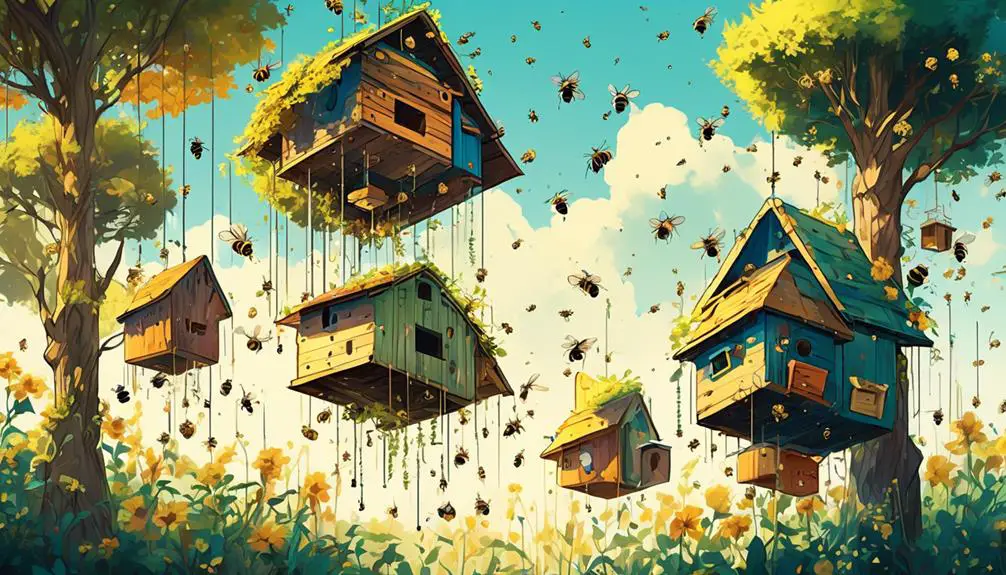
When it comes to hanging your mason bee house, the height plays a pivotal role in attracting these industrious insects and promoting their nesting habits. A height of 4 to 7 feet above the ground is generally recommended. This isn't only within the bees' natural flying range, but it also keeps the bee house out of reach from curious pets and children.
The height of the bee house also affects the temperature within the structure, which is crucial for the bees' survival and breeding. Mason bees are cold-bloody insects, and they require a certain amount of warmth to thrive. A bee house that's too low mightn't get enough sunlight, leading to cooler internal temperatures that may discourage bees from nesting.
Furthermore, the height of the bee house can influence its visibility to the bees. Mason bees have excellent sight and can easily spot their house from a distance. However, if the house is too high, it might be out of their sight range, leading them to seek nesting sites elsewhere.
Optimum Height for Mason Bee House
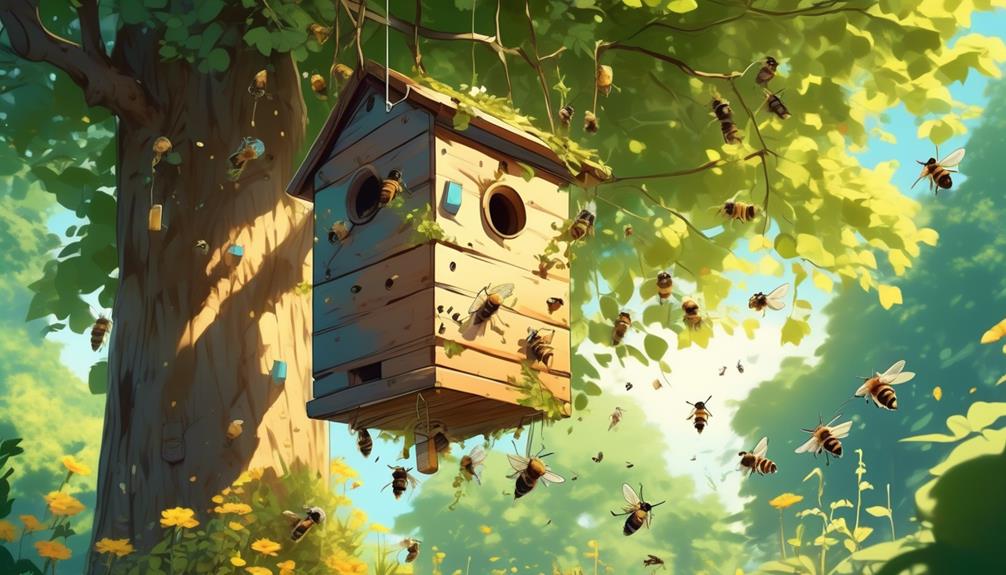
Striking the perfect balance, you'll find that positioning your mason bee house at a height of approximately 5 to 6 feet off the ground tends to be the most ideal for attracting these beneficial pollinators. This height allows the bees to easily locate their home, while keeping it safe from predators such as ants and rodents that may be lurking on the ground.
To help you understand better, here's a table that shows the effects of different heights on mason bees:
Height (Feet) | Accessibility for Bees | Risk of Predation |
|---|---|---|
Below 3 | High | Very High |
3 to 4 | High | Moderate |
5 to 6 | Optimal | Low |
7 to 8 | Low | Very Low |
Above 8 | Very Low | Negligible |
As shown in the table, a height of 5 to 6 feet offers a good compromise between bee accessibility and predation risk. So, when installing your mason bee house, aim for this optimum height. It not only ensures their safety but also contributes to a healthy and thriving bee population.
Factors Influencing Bee House Placement
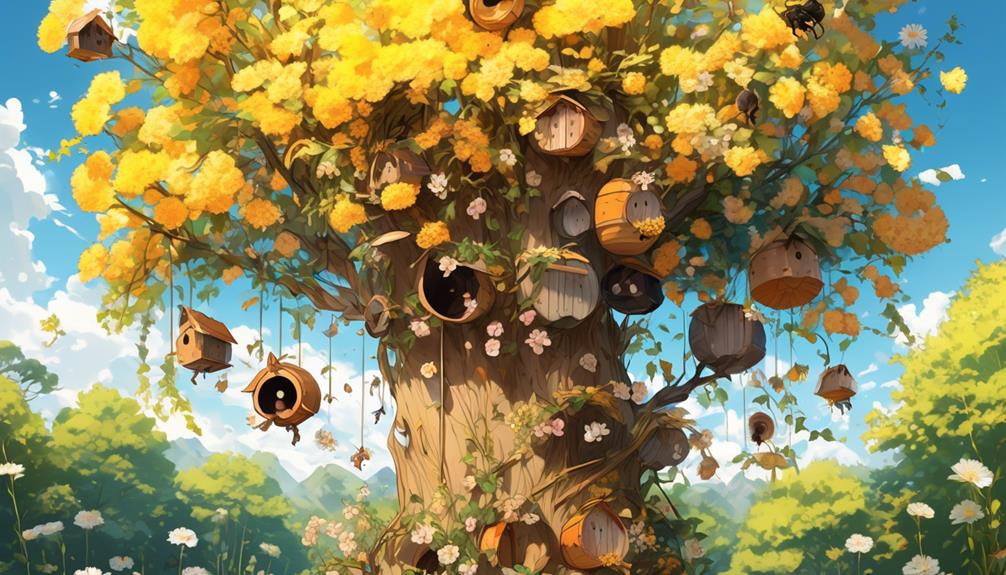
Choosing the right location for your mason bee house involves considering several key factors.
Firstly, it's important that the house faces an easterly direction. This is because mason bees are early risers and prefer to start their day with the morning sun. An east-facing house allows these diligent bees to warm up quicker and get a head start on their pollinating duties.
The amount of sunlight your bee house receives is another crucial factor. Although mason bees enjoy the sun, they don't like excessive heat. Therefore, a location that receives morning sun but is shaded during the hot afternoon hours would be ideal.
Tips to Attract Mason Bees

To attract mason bees to your newly hung bee house, it's crucial to create an inviting environment around it, filled with plentiful food sources and clean, accessible water. Mason bees are especially drawn to native, nectar-rich flowers. Therefore, planting a variety of such flora is a surefire way to tempt these beneficial insects to your garden. It's also worth noting that mason bees are solitary creatures, so they'll be more likely to stick around if they feel safe and undisturbed.
When it comes to water, remember that bees need it for drinking and cooling their hives. A shallow dish filled with small rocks or pebbles, providing numerous landing spots, can serve this purpose. Also, try to keep the water source consistent, changing it regularly to prevent stagnation.
Lastly, avoid using pesticides in your garden. These chemicals are harmful to bees and can deter them from nesting in your bee house. Instead, opt for natural pest control methods.
Conclusion
In conclusion, mason bee house height matters. Ideally, place it 5-7 feet high, but remember, the location's other factors are equally critical.
Ensure it's south-facing, with morning sun and afternoon shade. Don't forget, these bees prefer peace, so avoid high-traffic areas.
Tailoring your environment to attract mason bees won't only support local ecosystems, but also aid in your garden's pollination.
Make these adjustments and watch your garden thrive with mason bee activity.

